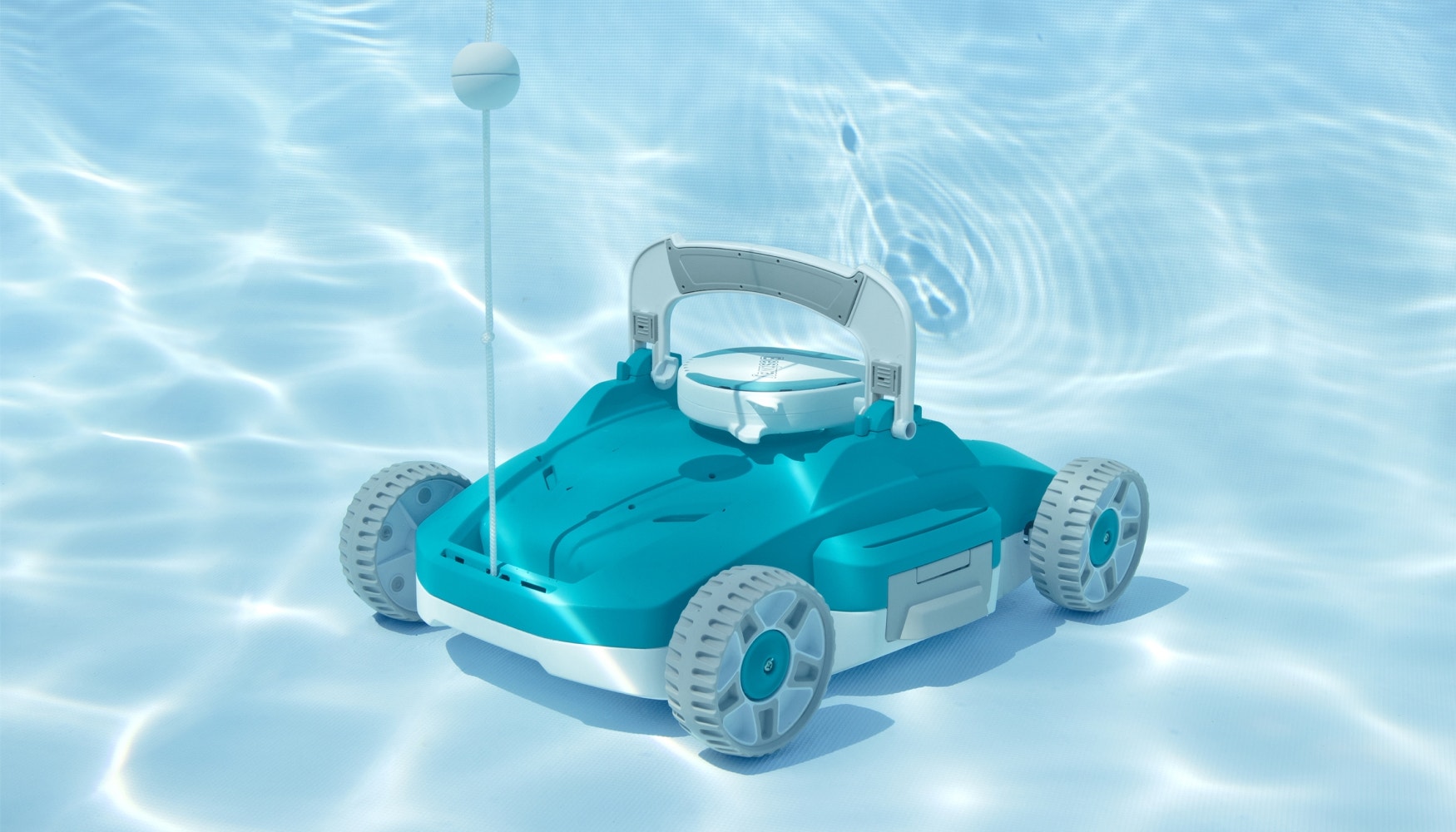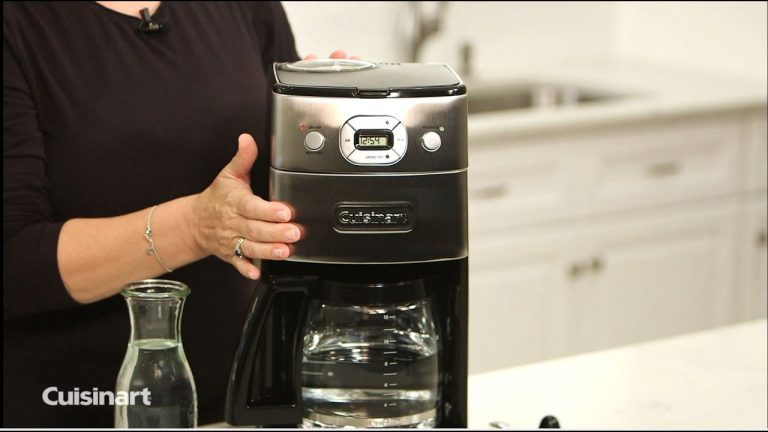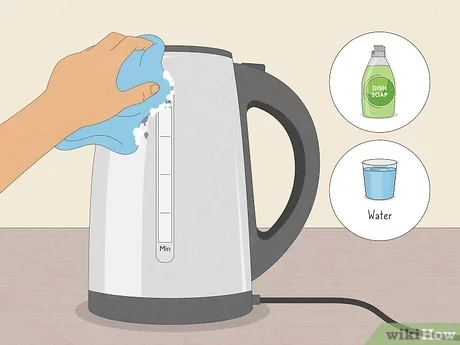How Do Robotic Pool Vacuums Work
Robotic pool vacuums work by using motorized wheels and brushes to navigate and clean the pool’s surfaces. They operate independently, collecting debris in an internal filter.
Robotic pool vacuums offer a convenient solution for pool maintenance. These devices are self-contained units equipped with powerful motors and advanced sensors. They move around the pool, scrubbing surfaces and sucking up dirt and debris. Their internal filters trap particles, which can be easily emptied after cleaning.
This automated process saves time and effort, allowing pool owners to enjoy a clean pool with minimal manual intervention. Advanced models even have programmable settings and remote controls for customized cleaning schedules. Investing in a robotic pool vacuum can significantly enhance the pool maintenance experience.
The Rise Of Robotic Pool Vacuums
The rise of robotic pool vacuums has transformed pool cleaning. These smart devices save time and effort. They offer a cleaner and safer swimming experience.
From Manual To Automatic: A Shift In Pool Cleaning
Traditional pool cleaning was labor-intensive. Manual pool cleaning required brushes, nets, and vacuum heads. It was time-consuming and often ineffective. The introduction of automatic pool cleaners changed everything.
Automatic cleaners reduced physical effort. They made pool maintenance easier. Among these, robotic pool vacuums stood out. They brought a new level of convenience and efficiency.
The Popularity Surge Of Robotic Pool Cleaners
Robotic pool cleaners gained popularity quickly. Their advanced technology and ease of use attracted many pool owners. They do not need complex setup or supervision. Once programmed, they work autonomously.
Key features that fueled their popularity include:
- Self-navigation: They map the pool for efficient cleaning.
- Energy efficiency: They consume less power than traditional cleaners.
- Advanced filtration: They capture even the smallest debris.
- User-friendly controls: Easy to operate for anyone.
These features make robotic pool vacuums a preferred choice. They ensure pools stay clean with minimal human intervention.

Credit: www.poolassist.com.au
Design And Engineering
The design and engineering of robotic pool vacuums are fascinating. These machines clean pools efficiently. They use advanced technologies to remove dirt and debris. Let’s explore how these devices are built and how they work.
Anatomy Of A Robotic Pool Vacuum
Robotic pool vacuums have several key parts. Each part plays a crucial role in cleaning.
- Motor: Powers the vacuum and allows it to move.
- Brushes: Scrub the pool surfaces to remove dirt.
- Filters: Trap debris and keep the water clean.
- Sensors: Help the vacuum navigate and avoid obstacles.
- Power Supply: Provides the necessary electricity.
These parts work together seamlessly. The motor drives the vacuum around the pool. Brushes scrub the pool floor and walls. Filters capture dirt and debris. Sensors guide the vacuum, ensuring it covers the entire pool.
Materials And Durability: Built To Last
Robotic pool vacuums are made from strong materials. These materials ensure the vacuum lasts long and performs well.
| Part | Material | Durability |
|---|---|---|
| Body | High-grade plastic | Resistant to water and chemicals |
| Brushes | Nylon or rubber | Long-lasting and effective |
| Filters | Stainless steel or mesh | Durable and easy to clean |
The body is often made of high-grade plastic. This material is resistant to water and chemicals. Brushes are made from nylon or rubber. These materials are long-lasting and effective in scrubbing. Filters are usually stainless steel or mesh. They are durable and easy to clean.
These materials ensure the vacuum can withstand regular use. They also ensure the vacuum can handle the pool environment. This makes robotic pool vacuums reliable and long-lasting.
Core Functionalities
Robotic pool vacuums are transforming how we maintain our pools. Understanding their core functionalities can help you appreciate their efficiency and effectiveness. Let’s dive into the key aspects that make these devices so effective.
The Navigation System: Ensuring Complete Coverage
Robotic pool vacuums use advanced navigation systems to cover every inch of your pool. These systems include sensors and algorithms to map the pool’s layout. This ensures no spot is missed.
The sensors detect walls, ladders, and other obstacles. The algorithms then calculate the best path to clean around these obstacles. Some models even remember the pool’s layout for more efficient cleaning in future sessions.
Features of the navigation system:
- Sensors: Detect obstacles and pool boundaries
- Algorithms: Calculate the most efficient cleaning path
- Memory: Store pool layout for future cleaning
Debris Collection And Filtration Mechanisms
Robotic pool vacuums excel at collecting debris and filtering water. They come with powerful suction capabilities that pick up dirt, leaves, and even small particles.
The collected debris is stored in an onboard filter. These filters can vary in type, including fine mesh and cartridge filters. The type of filter determines the size of debris the vacuum can handle.
Key components of debris collection and filtration:
- Suction Power: Strong enough to lift dirt and debris
- Onboard Filter: Stores collected debris
- Filter Types: Fine mesh, cartridge filters
Some models offer additional features like multiple filter options for different cleaning needs. You can switch between fine filters for small particles and larger ones for bigger debris.

Credit: bestwayusa.com
Smart Technology Integration
Robotic pool vacuums have changed how we clean pools. Smart technology makes these devices efficient. They save you time and effort. Let’s explore how these smart features work.
Sensors And Ai: The Brains Behind The Operation
Robotic pool vacuums have sensors. These sensors detect dirt and debris. They use Artificial Intelligence (AI) to make decisions. The vacuum knows where to clean next.
These smart vacuums map your pool. They learn the best cleaning paths. This ensures no spot is missed. They can navigate around obstacles. This means fewer interruptions.
Some models have water quality sensors. These sensors check the pool’s pH level. They can even adjust the cleaning based on water conditions. This means a cleaner pool and less work for you.
Remote Control And Automation Features
Many robotic pool vacuums come with remote controls. You can control the vacuum from your phone. This makes starting and stopping easy.
Automation features allow you to schedule cleanings. You can set the vacuum to clean daily or weekly. This means a clean pool without manual effort.
Some models integrate with smart home systems. You can use voice commands to control the vacuum. This adds convenience and ease of use.
Robotic vacuums also have docking stations. They return to the dock when the battery is low. They recharge themselves and resume cleaning.
These features make pool maintenance simple. You can enjoy a clean pool with minimal effort.
Power And Energy Efficiency
Robotic pool vacuums have revolutionized pool maintenance by offering superior cleaning efficiency. One crucial aspect is their power and energy efficiency. Understanding how they manage power and optimize energy usage can help you make an informed decision.
Battery Life And Charging Solutions
Robotic pool vacuums typically come with rechargeable batteries. These batteries can last several hours, providing ample time to clean your pool. The battery life depends on the model and usage.
Charging solutions are also quite advanced. Most robotic pool vacuums come with a docking station. This station automatically charges the vacuum when not in use. Some models even have fast-charging capabilities, reducing downtime.
| Model | Battery Life | Charging Time |
|---|---|---|
| Model A | 3 hours | 2 hours |
| Model B | 4 hours | 3 hours |
| Model C | 5 hours | 1.5 hours |
Energy Consumption: Eco-friendly Operation
Robotic pool vacuums are designed to be energy-efficient. They consume significantly less power compared to traditional cleaning methods. This eco-friendly operation ensures you save on electricity bills while maintaining a clean pool.
Advanced sensors and programming allow these vacuums to clean efficiently. They avoid unnecessary movements and focus on dirty areas. This reduces energy waste.
- Low power consumption
- Smart cleaning algorithms
- Energy-saving modes
Investing in a robotic pool vacuum not only keeps your pool clean but also helps in conserving energy. This balance of power and efficiency makes them a valuable addition to any pool maintenance routine.
Cleaning Performance
Robotic pool vacuums have revolutionized pool cleaning. They offer unmatched cleaning performance. These devices are highly efficient and user-friendly. They ensure your pool stays spotless with minimal effort. Let’s explore their capabilities further.
Efficiency In Different Pool Types And Sizes
Robotic pool vacuums adapt to various pool types. They work well in both in-ground and above-ground pools. They can clean pools of all shapes and sizes. This flexibility makes them a popular choice among pool owners.
These vacuums feature advanced sensors. They navigate around obstacles and cover every inch of the pool. Some models even have programmable cleaning cycles. This ensures thorough cleaning, no matter the pool’s dimensions.
The Impact On Water Quality And Hygiene
Robotic pool vacuums significantly improve water quality and hygiene. They remove debris, leaves, and even microscopic particles. This results in crystal-clear water. Cleaner water means a healthier swimming environment.
Most models come with powerful filtration systems. These systems trap dirt and contaminants. This reduces the need for chemical treatments. Less chemical use is better for swimmers and the environment.
| Feature | Benefit |
|---|---|
| Advanced Sensors | Efficient navigation and thorough cleaning |
| Powerful Filtration | Improved water quality and hygiene |
| Programmable Cycles | Customizable cleaning schedules |
- Adapt to various pool types
- Work in both in-ground and above-ground pools
- Remove debris, leaves, and microscopic particles
Maintenance And Upkeep
Robotic pool vacuums are a game-changer for pool maintenance. They keep pools clean with minimal effort. But they also need some care. Below, you’ll find tips on keeping your robotic pool vacuum in top shape.
Routine Care For Longevity
Regular maintenance extends the life of your robotic pool vacuum. Follow these simple steps:
- Empty the filter: Clean the filter after every use. This prevents clogs and ensures efficient operation.
- Check the brushes: Inspect the brushes for wear and tear. Replace them if they look worn out.
- Rinse the unit: After use, rinse the vacuum with clean water. This removes any pool chemicals that can corrode parts.
- Store properly: Keep the vacuum in a cool, dry place. Avoid direct sunlight to prevent damage.
Troubleshooting Common Issues
Even with proper care, issues can arise. Here are some common problems and solutions:
| Issue | Possible Cause | Solution |
|---|---|---|
| Vacuum not moving | Low battery or tangled cord | Charge battery or untangle the cord |
| Poor suction | Clogged filter or full debris bag | Clean filter or empty the debris bag |
| Not cleaning entire pool | Navigation issue | Check and reset navigation system |
Consumer Considerations
Buying a robotic pool vacuum can be a big decision. It involves thinking about cost, convenience, and the right model for your pool. This section will help you make an informed decision.
Evaluating Cost Vs. Convenience
Robotic pool vacuums come in various price ranges. High-end models offer more features and better cleaning. Cheaper models may lack advanced features but still do a good job.
Consider your budget first. Ask yourself if the extra features are worth the extra cost. More expensive vacuums often have better navigation and can clean faster. They might also last longer, saving you money in the long run.
On the other hand, budget-friendly vacuums can still keep your pool clean. They might just require more manual intervention. Think about how often you want to manually clean your pool. This will help you decide how much convenience is worth to you.
Choosing The Right Model For Your Pool
Every pool is unique. Different models of robotic vacuums are better suited for different types of pools. Here are some factors to consider:
- Pool size: Larger pools need vacuums with longer cords and bigger cleaning capacity.
- Pool shape: Complex shapes with many corners may need advanced navigation features.
- Pool surface: Some vacuums work better on certain surfaces like tile, vinyl, or concrete.
- Debris type: If your pool gets a lot of leaves, choose a model with a large debris bag.
Consider these points before making your purchase. It will help you choose the best robotic pool vacuum for your needs.
| Feature | High-End Models | Budget Models |
|---|---|---|
| Cost | High | Low |
| Cleaning Speed | Fast | Moderate |
| Navigation | Advanced | Basic |
| Durability | High | Moderate |
By evaluating cost vs. convenience and choosing the right model, you can make a smart purchase. Enjoy a clean pool with less effort!

Credit: www.astralpool.com.au
Conclusion
Robotic pool vacuums are a revolutionary solution for pool maintenance. They operate autonomously, using advanced sensors and algorithms to clean efficiently. With features like scrubbing brushes and powerful suction, these devices ensure a spotless pool without manual effort. Investing in a robotic pool vacuum saves time, reduces chemical use, and maintains pristine water quality, enhancing the swimming experience.




